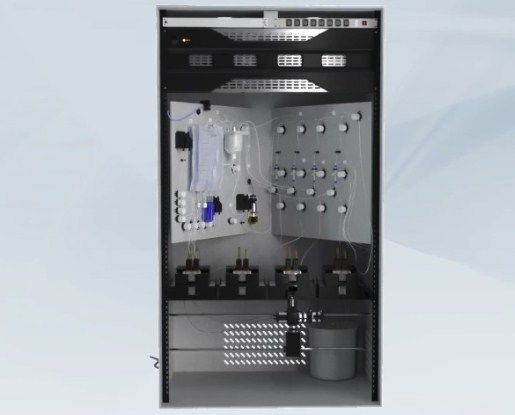Innovative Onsite Analytical System Rapidly Detects Microorganisms in Water
Published on by Water Network Research, Official research team of The Water Network in Technology
The EU-funded CYTO-WATER project has developed an innovative onsite analytical system capable of rapidly detecting different microorganisms in water.

Image Source: Cyto-Water
The analytical process, which takes no more than two hours, was validated for the detection of the microorganisms Legionella and Escherichia coli but can easily be adapted to detect other microorganisms. Rapid detection means that decisive action can be taken; a crucial element in ensuring that any potential disease outbreak is contained.
“Infectious diseases caused by microorganisms are the most common and widespread health risk associated with water, drinking and bathing,” says the technical director of the project, Dr Vicente Catalan, from Labaqua in Spain.
“Reducing the risk of waterborne diseases will improve the reputation and competitiveness of businesses such as water distribution companies, hotels, food and beverage industries and chemical plants.”
Rapid results
The new platform works by automatically concentrating a water sample, labelling each microorganism under investigation automatically as well. Using a fluorescence image cytometer, each specific labelled microorganism in the sample is detected and counted. “This imaging cytometer is like a kind of microscope without a lens that identifies the presence of a microorganism based on the fluorescence being emitted,” explains Dr Catalan.
One of the main advantages of the system is that it can be implemented onsite, avoiding the need for sending samples to the lab and having to wait days for the results. In the case of Legionella, traditional methods based on culture isolation can take up to 12 days, whereas the CYTO-WATER (Integrated and portable image cytometer for rapid response to Legionella and Escherichia coli in industrial and environmental waters) platform provides conclusive results in just two hours. “This is a disruptive advantage in the rapid diagnosis of quality threats to environmental and industrial waters,” says Dr Catalan.
Another advantage is that each of the three modules involved in sampling, labelling and counting pathogens can be sold individually, opening up a potentially far wider market. The automatic labelling module for example could be adapted to the workflow of laboratories of different sectors such as hospitals and universities.
“CYTO-WATER is a universal platform with applications for any waterborne microorganism,” underlines Dr Catalan. There is huge potential here, from monitoring Pseudomonas and Mycobacterium in hospital facilities to spoilage and pathogen detection in food and beverage plants.”
High specifications
To get to this point, the CYTO-WATER project team had to successfully overcome a number of key technical challenges. For example, water samples must be concentrated in order to improve the detection of pathogens, and the imaging cytometer has to be sensitive and robust enough to meet stringent regulatory standards. Different modules of the platform were adapted and validated individually to make sure they met with market specifications. “Another challenge was integrating the technologies involved in the concentration, labelling and detection of pathogens within a miniaturised analytical system,” adds Dr Catalan.
Operational performance under real conditions was then evaluated. An environmental and economic comparison with traditional spot sampling indicated that CYTO-WATER was more environmentally efficient for Legionella detection, and is less costly due to the need for less personnel and transportation.
Following official completion of the project in May 2018, new business and exploitation plans are being drawn up to consider how manufacturing costs can be further refined. Commercial analyses will also be conducted to determine the level of customer demand for the platform and its individual modules.
“The results we achieved in detecting Legionella and E. coli demonstrate the technical capabilities of the system,” says Dr Catalan. “However, market studies for other applications still need to be conducted, to fully assess the business potential.”
Source: CORDIS
Attached link
http://www.youtube.com/embed/2sRfA81sCNgMedia
Taxonomy
- Treatment
- Ultrafiltration
- Treatment Methods
- Chemical Treatment
- Filtration
- Quality
- Water Treatment Solutions
- Water Quality
- Filtration
- Filtration
- Water Quality Management
- water treatment
- Water Quality Research
- On-site Treatment
3 Comments
-
Is it able to identify specific strains like legionella pneumophila? Most legionella are not pathogens and they are ubiquitous. If it can't identify strains then it would not be isn't so significant.. On the other hand, if it can detect E Coli in 2 hours , that would be very good.
-
How does this system cope with high levels of bacteria of mixed populations?
-
what's the spectrum of pathogens, parameters (ei TOC, COD, BOD5) if apply, and any other emergent contaminante
what's the cost per each standard module for budgetary purpose, thanks